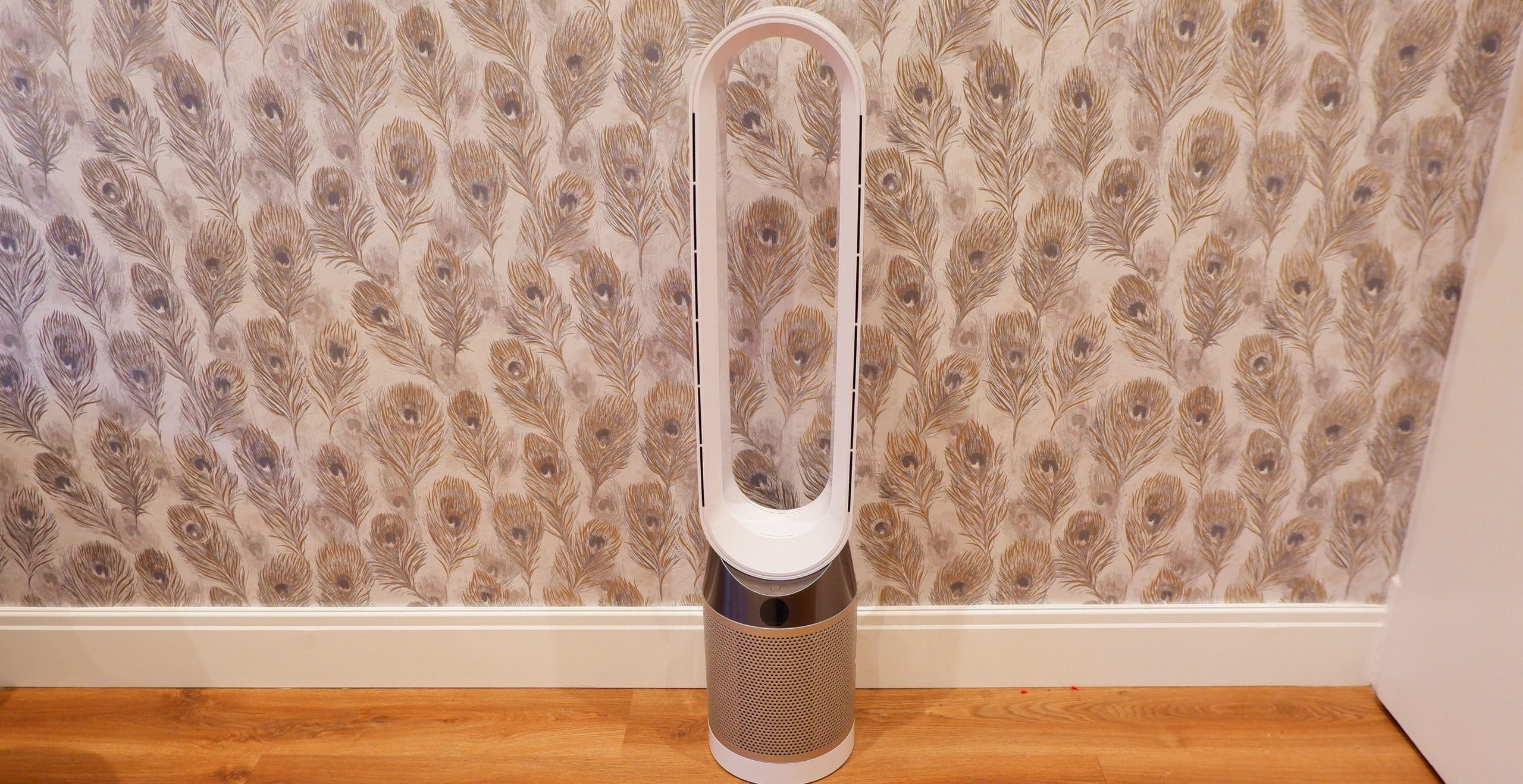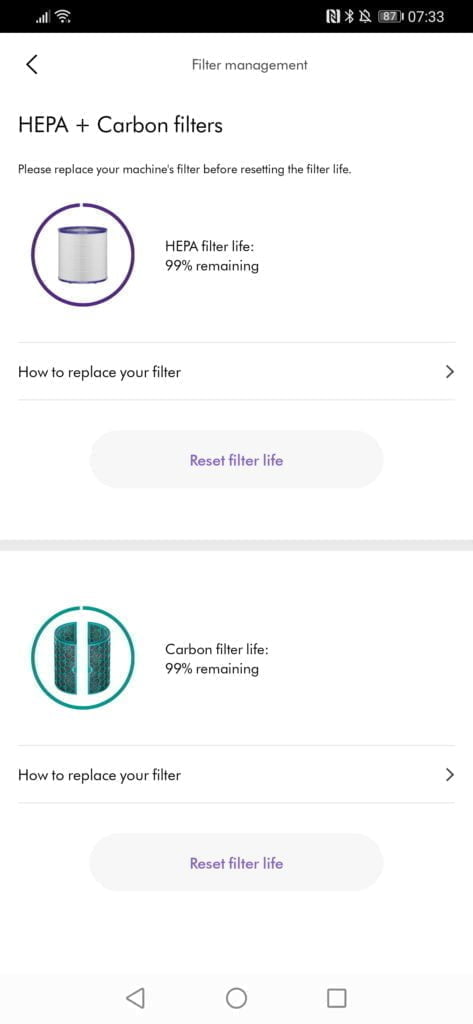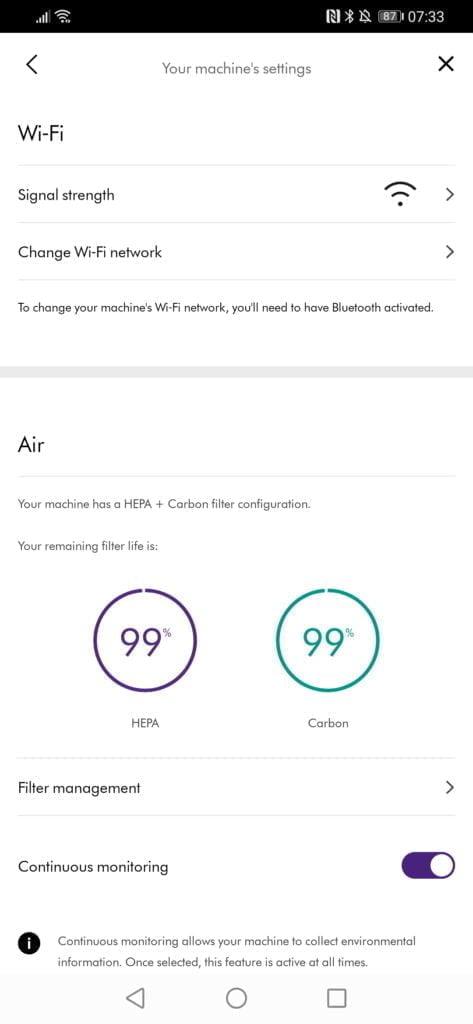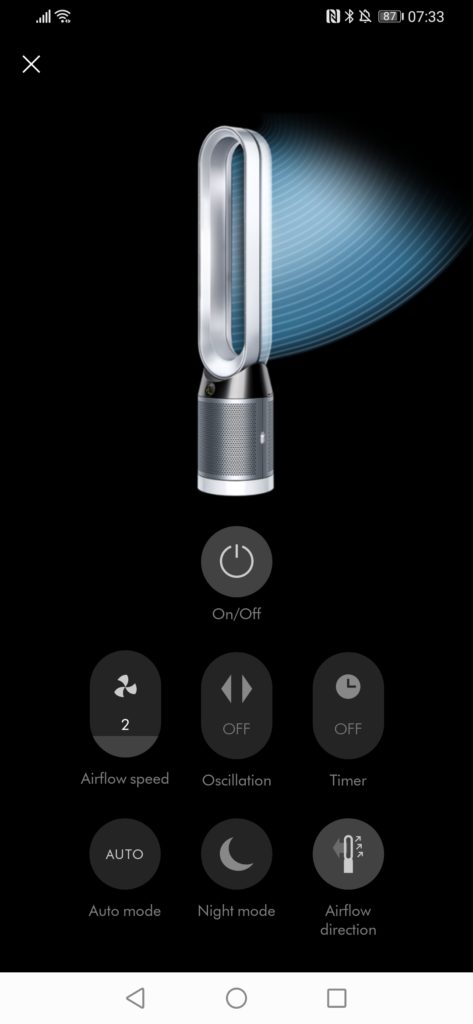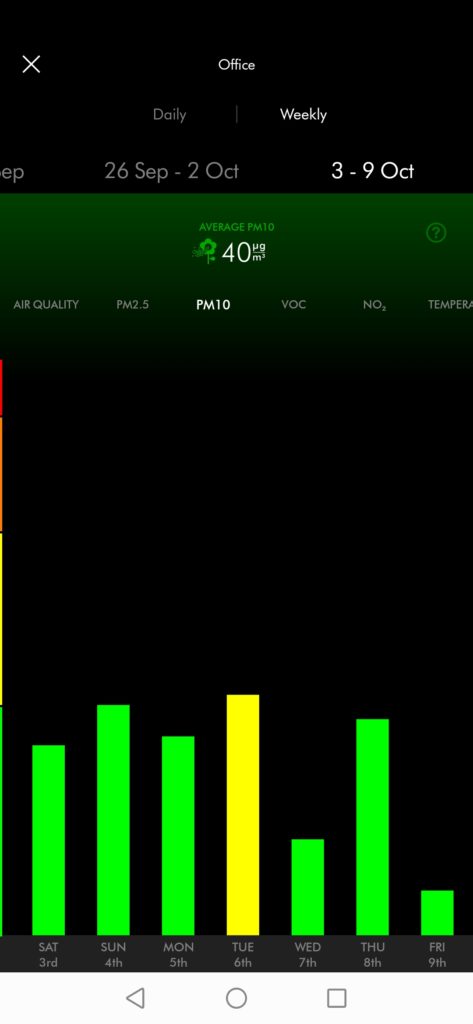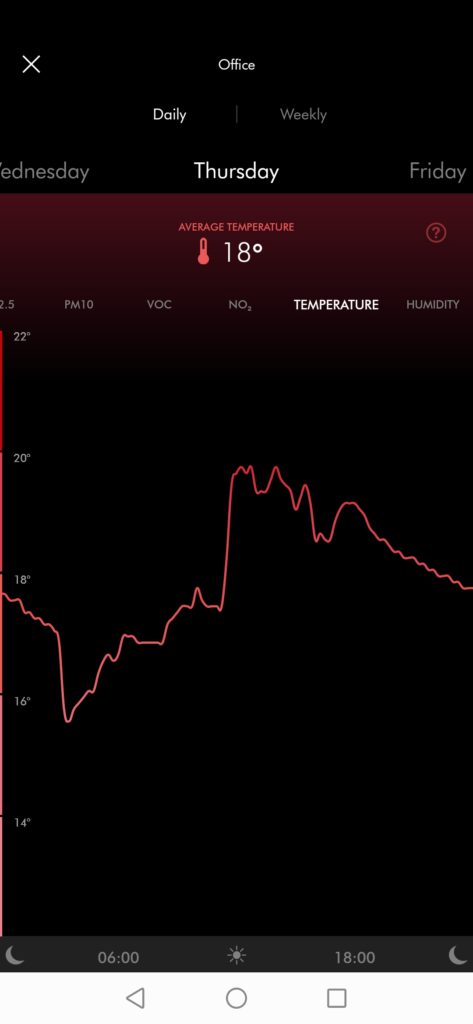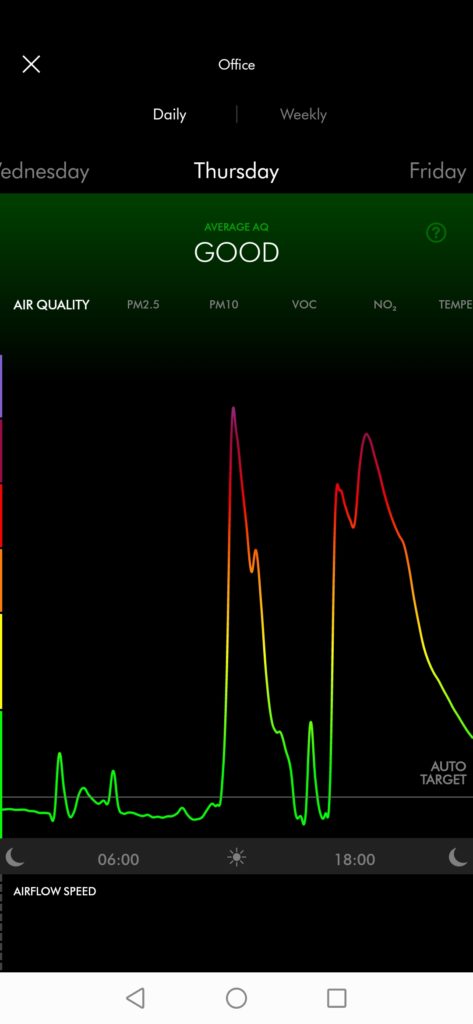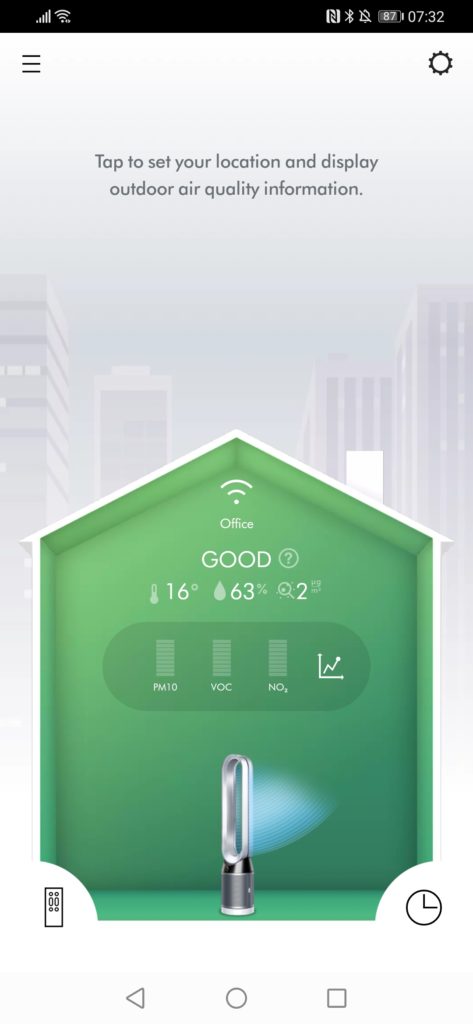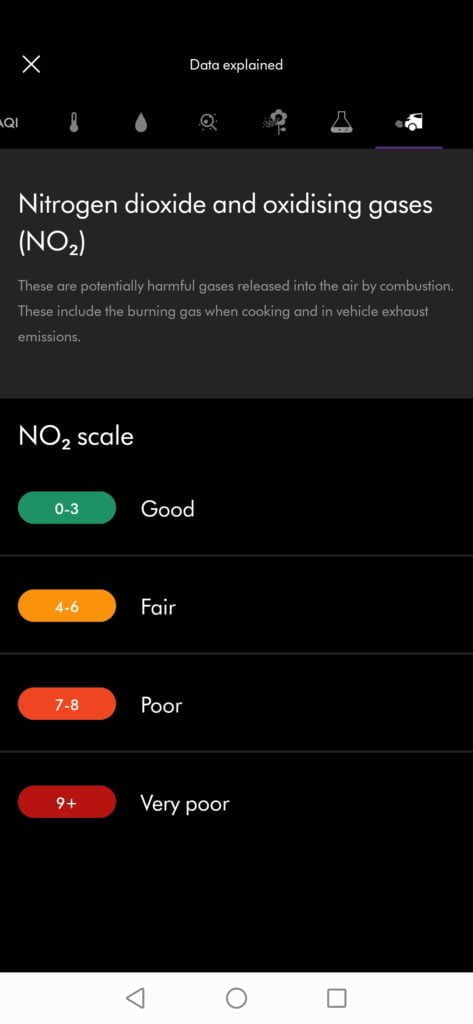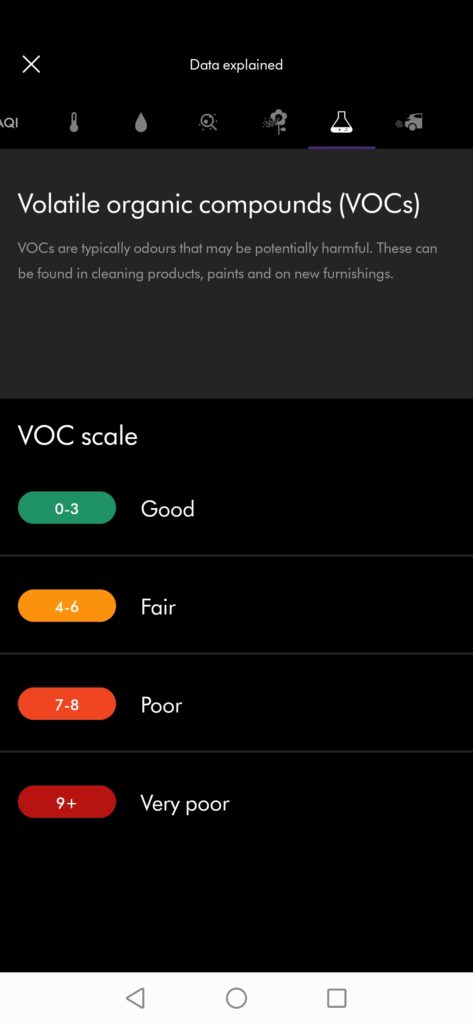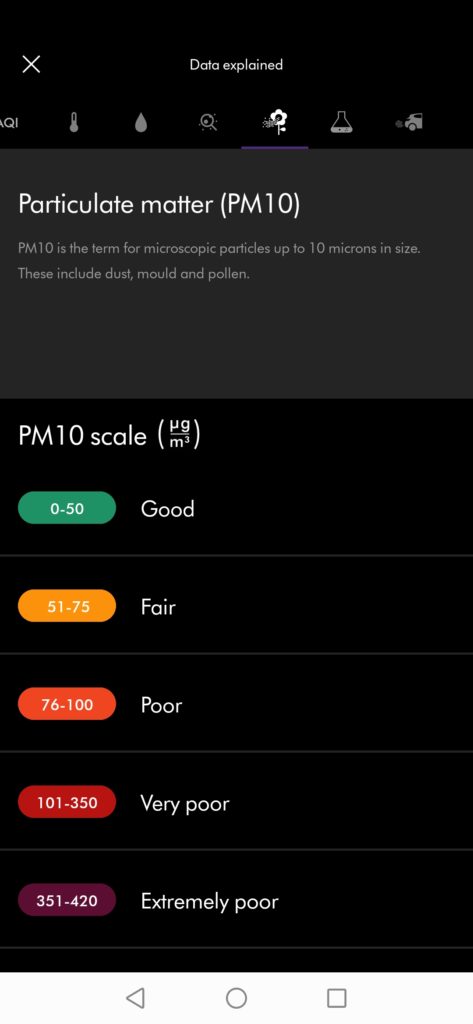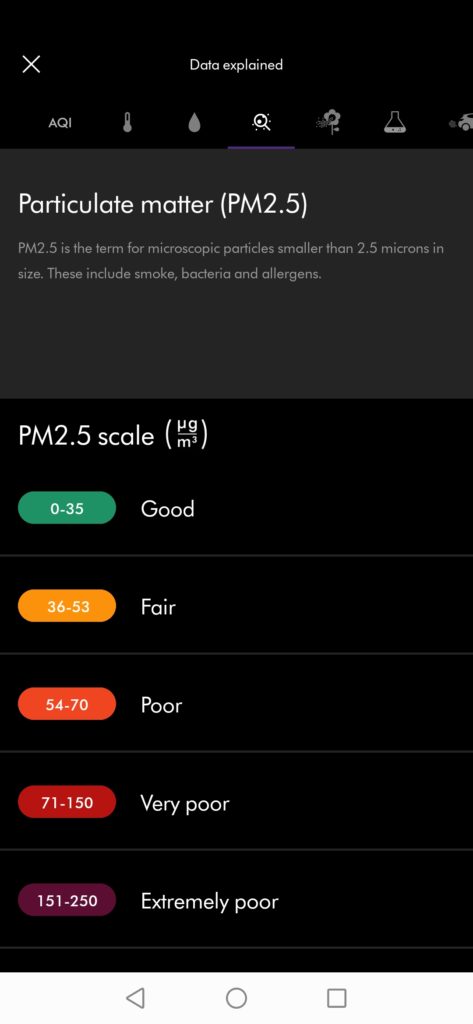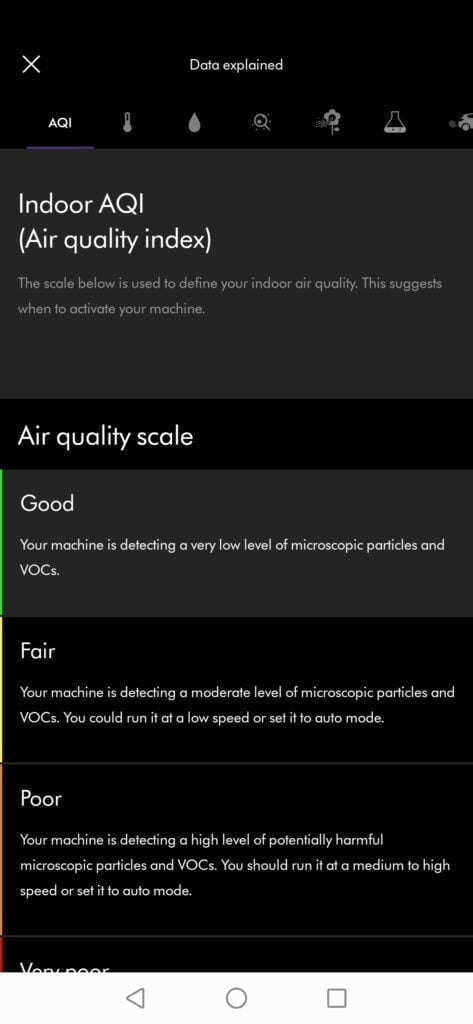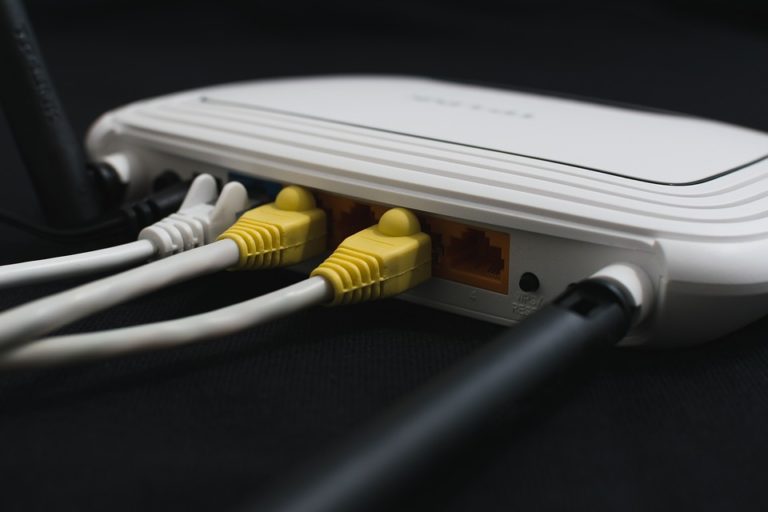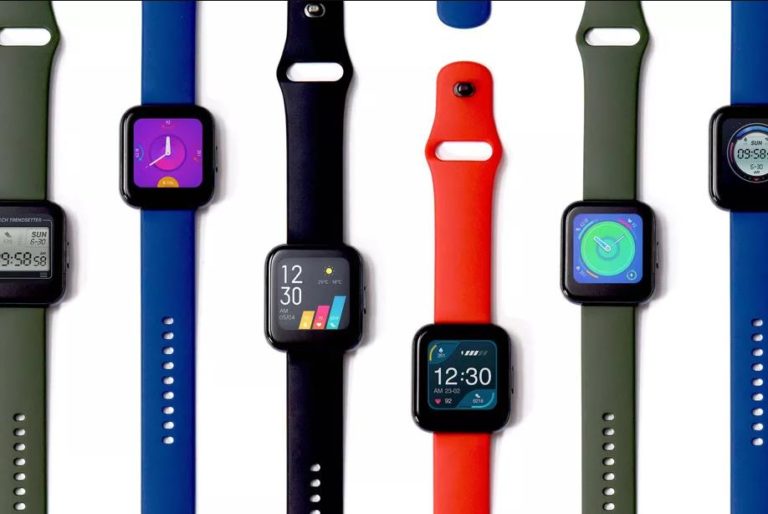Any links to online stores should be assumed to be affiliates. The company or PR agency provides all or most review samples. They have no control over my content, and I provide my honest opinion.
I love a bit of smart home tech, and I love health tech too, so the Dyson Pure Cool Fan was off to a good start when I was asked if I would like to review it.
At £499 you may wonder what is so special about this fan apart from its quirky design that ditches the fan blades for what Dyson calls an Air Multiplier.
This will not magically cool your room
I will get this out of the way first. Don’t buy this fan if you think it will magically cool your room. You will be very disappointed to find that the fan function of this is no superior to a generic pedestal fan.
Dyson is partly to blame here, I get why it is called Pure Cool, being an air purifier and fan, but some people will just read the name of the product and not bother looking at what it does.
All you have to do is look at user reviews to quickly see all the 1-star reviews are by people that have not bothered to read the product description. They have just bought this because of the Dyson brand name, thinking this unique looking fan was some sort of magic air conditioning unit.
So what is this?
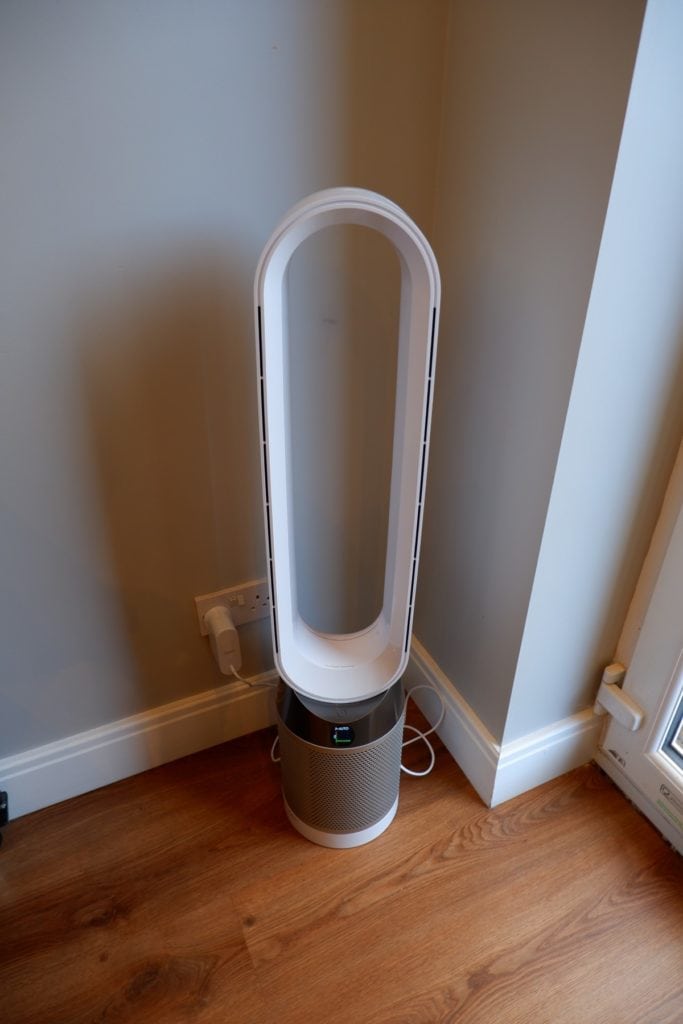
This is a smart home air quality monitor with an air purifier and fan. If you have no interest in air quality, this may not be the product for you. Though if you are well off and looking for a stylish fan with smart controls, it is still worth considering.
As well as the Air Multiplier fan technology, this will monitor the quality of the air in your room, looking for particulates that can trigger asthma attacks and other breathing-related issues. It then pushes all the air through a HEPA filter to remove all the harmful airborne particles, and it can do this all automatically, controlled via an app on your phone.
Certified Asthma & Allergy Friendly
The unit is certified asthma & allergy friendly, which is a certification system set up in conjunction with is backed by the leading asthma & allergy patient advocacy group the Asthma and Allergy Foundation of America (AAFA) and the international standards body Allergy Standards Limited (ASL). Each product category goes through extensive, highly rigorous, proprietary testing to ensure that these products can perform at a high level and wholly contribute to a healthier home.
Below are the certification standards for asthma & allergy friendly air purifiers:
- Reduces allergens in the air
- Allergen is removed from the air and not just redistributed
- Removes over 75% of allergens from the air
- Produces very low levels of ozone
- Tested in carpeted and hard floor rooms with cat and dust mite allergen
A full list of certified air purifiers, which include several models within the Dyson range can be found here.
Similarly, it is also QuietMark certified, which is the same concept, but for certifying products based on their noise levels.
Let’s try and justify the price and look at altnerative options
At £499.99 this is an incredibly expensive pedestal fan. But actually, the sum of its parts justifies the cost. Let’s look at separate devices that would replicate all the functions the Dyson offers.
Air Purifiers and CADR (clean-air delivery rate)
For a start, if you want a good quality air purifier, they can come close to the cost of the Dyson in the first place.
CADR is normally used to guage how good an air purifier is. However, Dyson don’t state the CADR (clean-air delivery rate) they even have an entire page dedicated to it, but the fan itself delivers 290 litres per second of smooth, yet powerful airflow.
Smart air purifiers from the likes of Blueair or the Series 2000i Air Purifier start from about £350, these both offer over a CADR of 250m³/h.
Most none smart half-decent air purifiers cost at least £150 for a CADR value of 150m³/h or below. All the cheap air-filters that are below £100 are likely a waste of money for most normal size rooms.
Smart fan and Air Quality Monitor Alternatives
So with the air purfier part out of the way let look at the other two components
- For a smart controlled fan, the AirGo Smart Fan is £105, which is about the best alternative option.
- Air quality monitors vary in price a lot the BREATHE|Smart 2 is £120, Airthings Wave Mini is £79 none of them measures the exact same things (very few measure PM10 which the Dyson does.
So you can maybe have three separate devices that do the same job for less, but ideally, you want them all to work together to automate the process.
The Dyson does all this and does it while looking about as attractive as an air-purifying fan can get.
So even though it is expensive by most peoples standards, I think it justifies the cost, if you make use of all the features.
Set Up
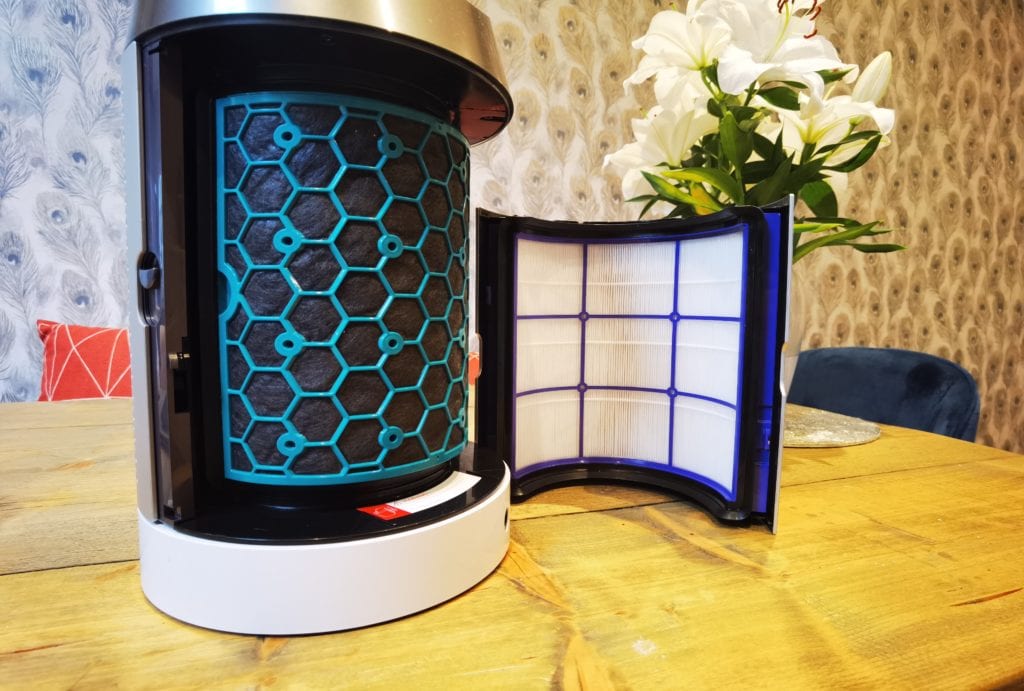
This is a large fan in a massive box, when you open it up, it is quite intimidating, but it turns out easy to assemble.
You only really need to attach the to semi-circular filter parts and then plug it in.
You can then switch the fan on via the power button on the unit itself or via the tiny remote included.
Then you will want to set it up with the Dyson Link app, this is a straightforward process, similar to most IoT devices where you will need to pass over your Wi-Fi details to the device. Registering the fan with the app also registers you with the two-year warranty. The two-year warranty and auto-registration are two things you are unlikely to find on more affordable products.
App
The app is well designed, and quite basic, offering you almost everything you need.
The home screen gives you an overview of the current air quality conditions, if you then click on the question mark you get an explanation of the air quality factors.
Clicking on the air quality readings gives you a historical graph of the air quality, you can optionally enable 24/7 recording, I think this is something worth doing, so you gain some insight into the quality of your air over time.
From the main screen, you can manually control the fan, switching it on/off, set the fan level, timer, oscillation and airflow directions.
Then the little clock icon will take you to the schedule when the fan will automatically turn on and follow the settings you apply.
This is good, but there is room for improvement. This is a time-based schedule, it would be good to offer event-based automation such as if the temperature hits a certain level, or the air quality declines. Ideally, you would have some basic logic statements too, so I could have it automatically turn on during the day when air quality is poor, but not at night when I am sleeping.
This leads me to the next missed opportunity. The only third party integration is via Amazon Alexa. I feel like something as advanced as this should offer some sort of compatibility with other systems such as IFTTT or even Z-Wave/Zigbee/SmartThings. This maybe niche uses, but smart home enthusiasts tend to be quite willing to spend a premium on devices, and this functionality would be a big selling point. Being able to have the fan trigger other devices or vice versa based on air quality would be an amazing feature.
Air Quality Factors
The air quality features are the main reason why you should be buying the Dyson Pure Cool, but what actually is air quality, and how does it affect us?
The Dyson monitors your normal things like temperature and humidity, but then it has four air quality factors, PM10, PM2.5, Volatile Organic Compounds and NO2.
The National Air Quality objectives and EU directive pollution limits both limit the levels of PM2.5 and NO2.
All of the factors below have a negative effect on our health, and in particular, anyone that suffers from allergies, asthma or other breathing-related issues, they can be very problematic.
PM2.5 & PM10
The PM bit stands for Particulate Matter then the number is the size of that particulate in micrometres
The particles in PM2.5 category are so small that they can only be detected with the help of the electron microscope.
Particulate matter is a complex mixture of soot, smoke, metals, nitrates, sulphates, dust water and rubber etc.
The primary source includes automobile emissions, dust and cooking smoke. The secondary source of pollution can be due to complex reactions of chemicals like sulphur dioxide and nitrogen oxide. These particles are mixed in air and pollute it. Apart from these, forest fires, wood-burning stoves, agricultural burning, smoke of the industry, dust occur from various construction sites also causes air pollution etc.
From the Department of Environment Food & Rural Affairs:
For PM2.5 there is understood to be no safe threshold below which no adverse effects would be anticipated
The biggest impact of particulate air pollution on public health is understood to be from long-term exposure to PM2.5, which increases the age-specific mortality risk, particularly from cardiovascular causes.
https://laqm.defra.gov.uk/public-health/pm25.html
For Wikipedia:
The effects of inhaling particulate matter that have been widely studied in humans and animals include asthma, lung cancer, respiratory diseases, cardiovascular disease, premature delivery, birth defects, low birth weight, and premature death.
https://en.wikipedia.org/wiki/Particulates#Health_effects
Volatile Organic Compounds
Volatile Organic Compounds (VOCs) are a large group of chemicals that are found in many products we use to build and maintain our homes. Once these chemicals are in our homes, they are released or “off-gas” into the indoor air we breathe.
Sources of VOCs include paint, varnishes, caulks, adhesives, Upholstery and foam (such as memory foam mattresses).
Home products also produce VOCs such as air fresheners, cleaning products and cosmetics
Then basically anything involving heat or chemicals can cause then, in particular smoking, cooking, and burning wood.
These then cause sensory irritation symptoms having health effects that affect the eyes, nose, and throat and can cause headaches, loss of coordination, nausea, damage to the liver, kidney, and central nervous system.
NO2
Nitrogen Dioxide is a common pollutant in our air with the prominent sources being internal combustion engines burning fossil fuels.
For NO2, the issues it causes are respiratory symptoms such as shortness of breath and cough. Nitrogen dioxide inflames the lining of the lung and reduces immunity to lung infections such as bronchitis.
Performance
Air Quality and breathing improvements
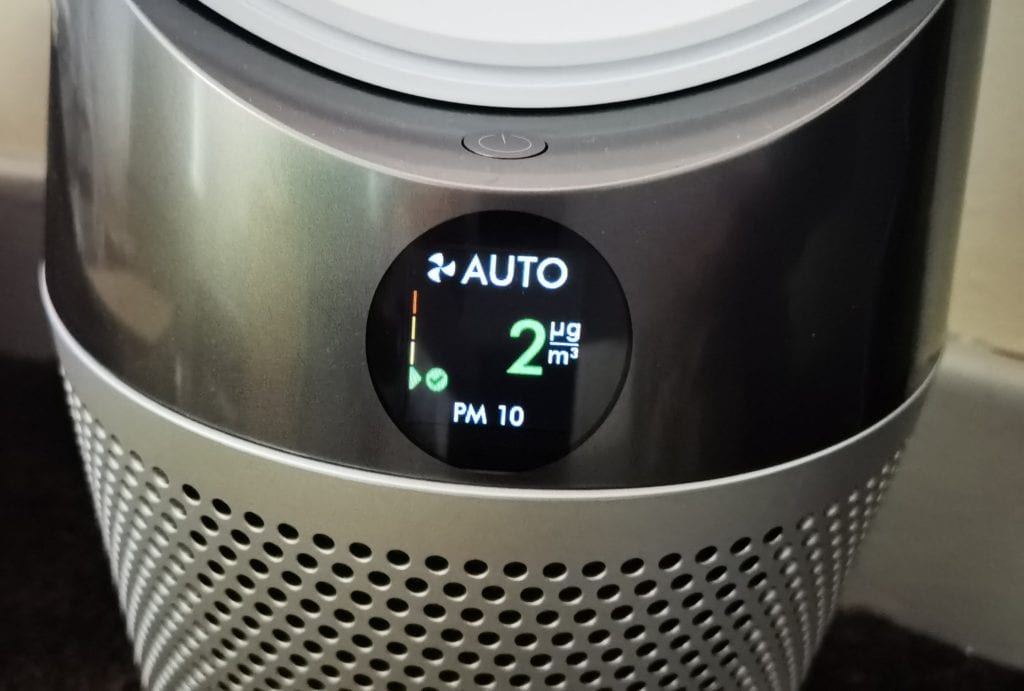
I am lucky to not have a serious respiratory condition, but I do have mild allergies, and I have suffered from chronic congestion for 10+ years. This has then been made worse by the rebound effect of taking Sudafed decongestant nasal spray which contains xylometazoline. It turns out that xylometazoline is highly addictive if you take it for too long the congestion comes back worse than ever, and you end up in a vicious cycle.
Being addicted to Sudafed is undoubtedly a first world problem, and while it doesn’t have major health issues, it can affect my sleep which in turn has a negative effect on health. Plus it is incredibly frustrating to live with.
I had no expectations that the Dyson would improve anything for me, and I can’t prove it has, but my breathing issues since using it have improved significantly.
Previously I used to take Sudafed before lunch sometimes before my dinner then bed. After a week of using the fan, I only use it before bed. I also rarely suffer from a fully blocked nose throughout the day, whereas previously, I would often just try and put up with it.
I have always known there is a strong correlation between cooking and my congestion, but the fan proves it, when I cook my lunch in the kitchen, the air quality in my office which is upstairs and two rooms over, deteriorates significantly.
Thanks to the air quality monitoring in general, I have also become more mindful about ventilation and closing the door from the kitchen area to the rest of the house. This has a significant effect on the air quality, readings for PM2.5 and PM10 in my office only hit around 60, while at first, it could go past 400.
As a fan and fan noise
The actual fan part of the Pure Cool is good, but it is just a fan at the end of the day. Due to the cooler weather, I have not needed to use it while sleeping, but it is certainly not as quiet as some of the pedestal fans I have used.
At level one, the slight breeze coming out of the unit doesn’t make much/any noise but if you bring you to ear down to where the filters are this is a noticeable hum. At the end of the day, while this may not look like a traditional fan, something inside it is still spinning, and that thing is not as big as a 16″ fan blade. Therefore it has to spin faster and louder which a higher pitched noise.
It is not a bad noise, ambient noise and my quiet PC drown out the noise up until level 3, so I imagine most people won’t have an issue sleeping with it on. The sound profile of the fan noise isn’t too bad either, it is a steady hum, while higher-pitched than big fans the consistency of the sound should work OK as white noise. I find Inconsistent sounds are often more annoying than a louder consistent hum for me, so come summer, I think I could sleep with this on.
When it detects poor quality air and ramps up the fan to level 10, it is very loud and intrusive, and I would say the volume of air it pushes is less than a normal large pedestal fan at its highest setting (which would be equally as loud).
Overall
Assuming you are fully aware of what this fan actually does do, what it doesn’t (it can’t physically cool the air) and why it costs so much, I think it is superb.
You are getting three devices in one, saving you bulky, ugly devices sitting around your home.
I can’t objectively prove it has been responsible for the improvement of my breathing, but there has been a significant difference with my congestion since using it. While this is a minor health condition in the grand scheme of things, it has been frustrating for years and affects my sleep which in turn can have other negative health consequences. If I had known it would make such a difference to my breathing, I would have bought one when it first launched.
For people with more serious medical conditions, I am reluctant to say this will make a huge difference to your life. Still, it is something I would thoroughly recommend looking into and trying out if at all possible.
Dyson TP04 Pure Cool Air Purifying Fan Review Rating
Summary
The Dyson TP04 Pure Cool is an impressive smart home appliance capable of purifying the air in your home automatically base on the air quality readings it monitors. It is also the only high-quality air purifier on the market that offers a built-in cooling fan function. Just don’t buy it thinking the fan offers cooling that is somehow superior to any other pedestal fan.
Overall
90%-
Overall - 90%90%
Pros
- Three in one device that is not that expensive when factoring in the individual components
- Best looking fan and air purifier on the market
- Smart monitoring helps give you insight on how to improve the overall air quality in your home
Cons
- Fan doesn’t go quite as silent as others
I am James, a UK-based tech enthusiast and the Editor and Owner of Mighty Gadget, which I’ve proudly run since 2007. Passionate about all things technology, my expertise spans from computers and networking to mobile, wearables, and smart home devices.
As a fitness fanatic who loves running and cycling, I also have a keen interest in fitness-related technology, and I take every opportunity to cover this niche on my blog. My diverse interests allow me to bring a unique perspective to tech blogging, merging lifestyle, fitness, and the latest tech trends.
In my academic pursuits, I earned a BSc in Information Systems Design from UCLAN, before advancing my learning with a Master’s Degree in Computing. This advanced study also included Cisco CCNA accreditation, further demonstrating my commitment to understanding and staying ahead of the technology curve.
I’m proud to share that Vuelio has consistently ranked Mighty Gadget as one of the top technology blogs in the UK. With my dedication to technology and drive to share my insights, I aim to continue providing my readers with engaging and informative content.

